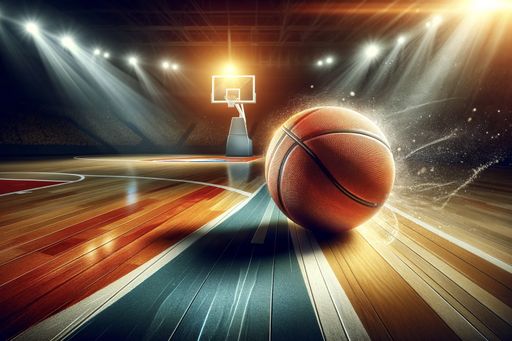The Rise of the G League as an NBA Developmental Pathway
More and more NBA first-round picks are spending time in the G League to gain valuable playing experience and develop their skills. This article explores the growing trend and how it's benefiting young players in their transition to the NBA.

The G League as a Stepping Stone for NBA First-Round Picks
Atlanta Hawks forward Jalen Johnson is a prime example of a player who honed his skills in the G League before making an impact in the NBA. Despite not initially understanding the move to the G League, Johnson thrived in the lower level of the NBA and gained the necessary confidence to succeed in the big leagues.
Johnson's story is not unique; many of the first-round picks in recent drafts have spent time in the G League as rookies. This season alone, 18 of last summer's 30 first-round picks have played in the G League, setting new records for the minor league. The G League has become a valuable developmental pathway for both undrafted players and highly touted prospects in need of more seasoning.
The increased interest and investment from NBA teams in the G League has led to improved facilities, better resources, and more individualized attention for players. The league has also seen a higher level of competition with the introduction of two-way contracts and a focus on player development. As a result, more players are embracing the G League as an opportunity to improve their game and make the jump to the NBA.
Why the G League Is Gaining Traction
The NBA's developmental league, now known as the G League, has come a long way since its inception in 2001. For many years, it existed on the periphery of the NBA and served primarily as a stepping stone to college basketball and European leagues. However, recent changes, such as increased investment from NBA teams and the introduction of two-way contracts, have elevated the G League's status as a legitimate pathway to the NBA.
The G League now offers better facilities, improved nutrition and accommodations, and more personalized attention for players. NBA teams are embracing the G League as an essential part of their player development strategy, with all 30 franchises set to own or operate a G League affiliate by next season. The league has also adopted successful business practices from minor league baseball, further enhancing the fan experience and attracting more attention to player performance.
Overall, the G League has become a more attractive option for young players to gain crucial on-court experience and prepare for the challenges of the NBA. The league's increased integration with NBA teams and focus on individual development has created a more conducive environment for players to thrive and reach their full potential.
The Benefits of G League Experience
G League assignments provide young players with valuable playing time and opportunities to develop their skills in a competitive environment. Players like Jalen Johnson and Peyton Watson have seen significant improvements in their game after spending time in the G League. They credit their experience with helping them gain confidence, adjust to the professional level, and contribute to their NBA teams.
In addition to on-court development, the G League also offers players intangible benefits such as mental growth and improved decision-making. Players who embrace their G League assignments as opportunities for growth and follow a specific development plan set by their NBA teams have been able to make a smoother transition to the NBA and find success at a young age.
The G League's role in player development goes beyond individual skills. The league also serves as a bridge between college basketball and the NBA, helping players adjust to the physicality, speed, and rule changes of the professional game. It offers a supportive environment where young players can learn from experienced coaches and work on specific areas of their game that will prepare them for NBA competition.




